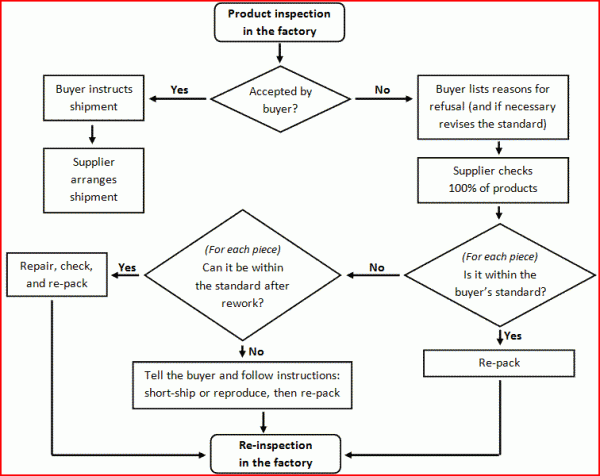 Quality inspections are only a way to collect information, and present it in a way that allows the buyer to take a decision. Last month I wrote a post about the case where the buyer refuses the products and asks for rework. In that article (re-inspections and corrective actions), I explained what to do:
Quality inspections are only a way to collect information, and present it in a way that allows the buyer to take a decision. Last month I wrote a post about the case where the buyer refuses the products and asks for rework. In that article (re-inspections and corrective actions), I explained what to do:
- Analyze the situation and send clear guidelines to the supplier,
- If necessary, change the scope of the inspection.
But I keep explaining this over and over to my clients. So I drew a flow chart that can be used as a procedure for dealing with failed inspections:
A few notes, for using this flow chart with highest effectiveness:
- The buyer should anticipate all these steps (can it be repaired? if not, what to do?), and then communicate with the supplier accordingly.
- In the best case scenario, the supplier communicates the percentages of (1) the pieces that are classified as fine after the sorting job, and (2) the proportion of pieces that are not acceptable but that can be reworked.
- For very sensitive production runs, the buyer can send an inspector to check the reliability of the sorting job and the effectiveness of the repair job.
- The factory’s incentive is to sort out quickly the biggest issues and repair them grossly to be a little closer to the standard (“cha bu duo”). The worst for them is to short-ship or reproduce because it means materials were wasted (and it generally costs much more than labor).

